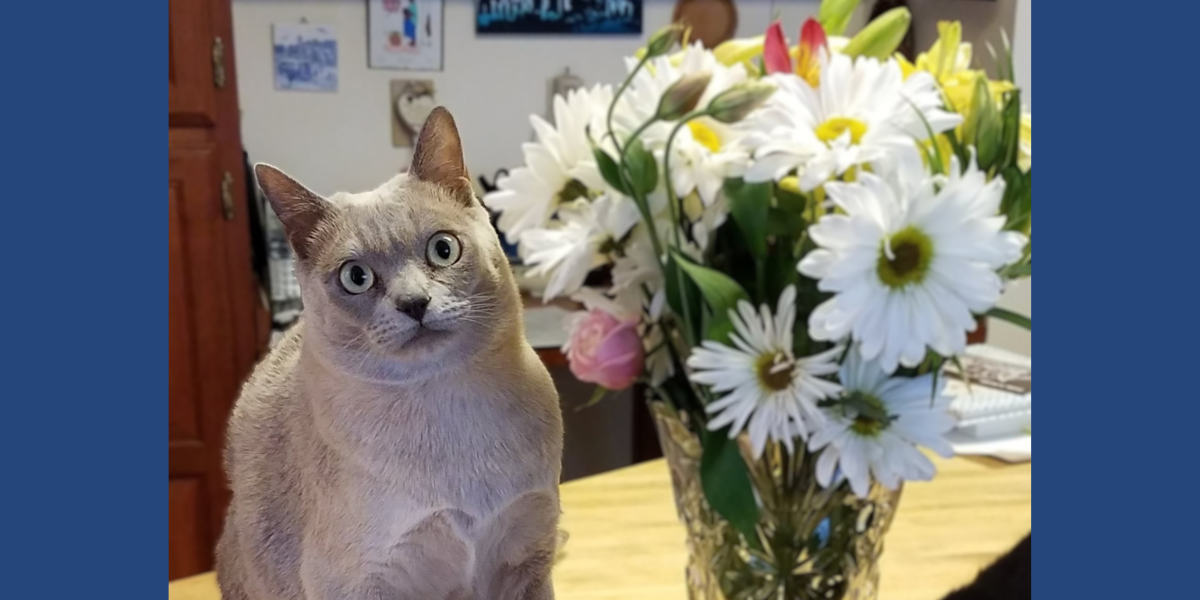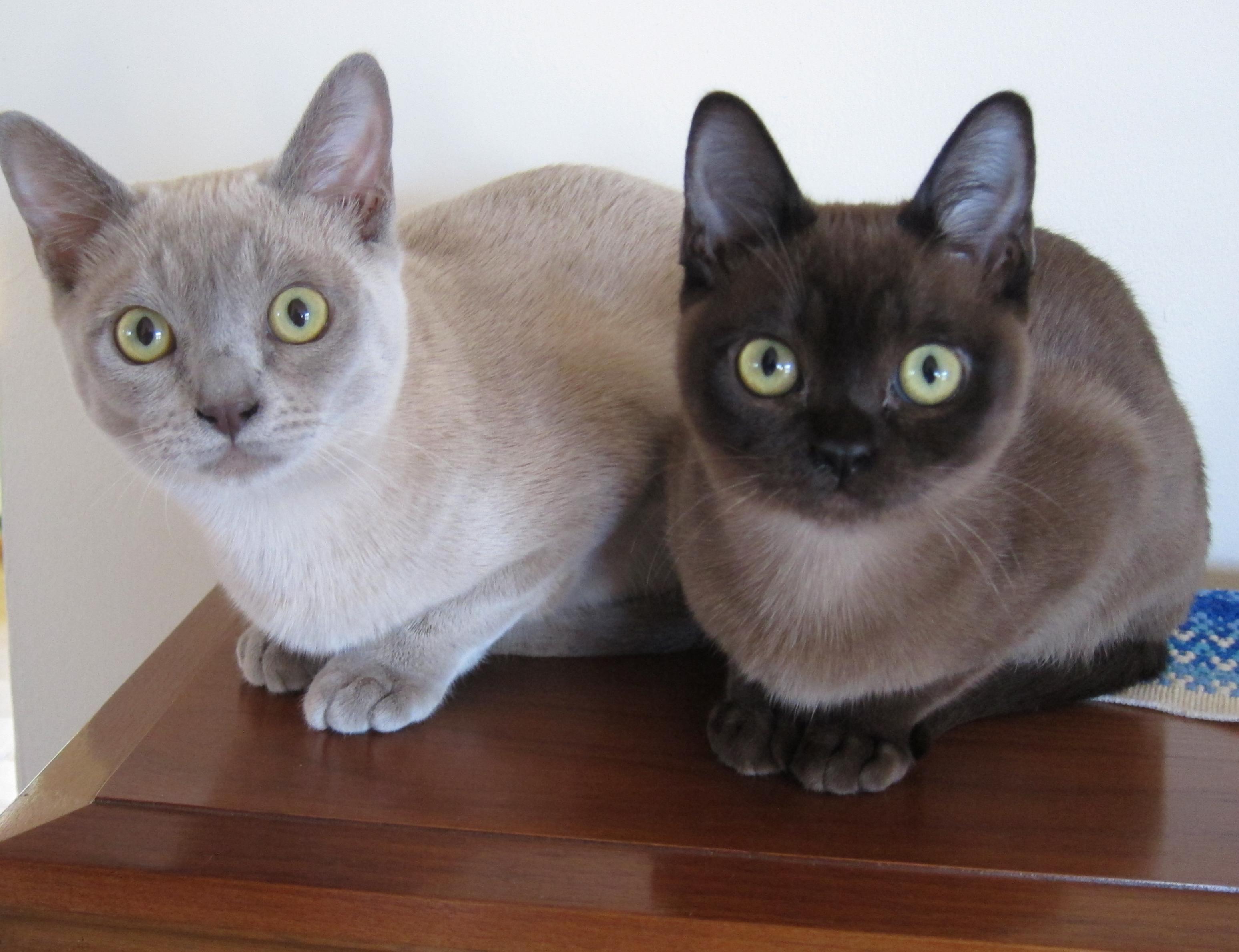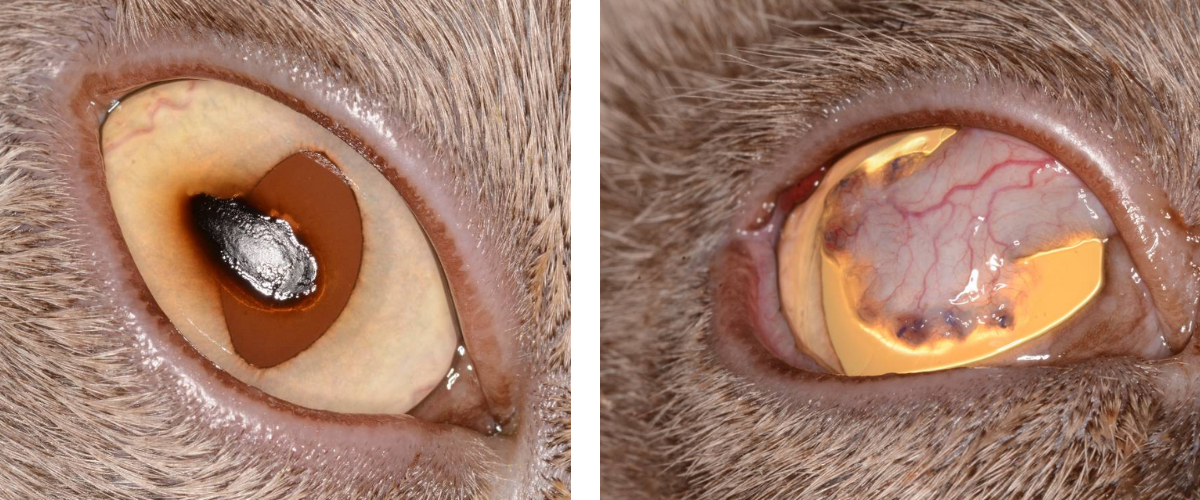Complex care saves cat’s cornea
Veterinary Medical Center cardiologists, ophthalmologists, and anesthesiologists team up to preserve Charlie the cat’s vision

Veterinary Medical Center cardiologists, ophthalmologists, and anesthesiologists team up to preserve Charlie the cat’s vision
Charlie sits next to a bouquet of flowers.
In spring 2023, Paul and Jody Benshoof noticed a pale brown spot developing on the left eye of Charlie, one of their two Burmese cats.
Throughout the damp Bemidji summer, the spot began to darken, and they monitored it according to advice from their veterinarian. By September, the spot was worrying. Thinking that it might be a melanoma, their vet referred Charlie to a veterinary ophthalmologist four hours away in Andover, Minn.
The ophthalmologist quickly recognized the lesion not as cancer, but a corneal sequestrum—the tissues in Charlie’s cornea had died and the only fix was a complicated surgery called a lamellar keratectomy and conjunctival graft, which would remove the dead tissue and replace the missing cornea with grafted eye tissue.

“This is a procedure only trained ophthalmologists can do because it requires the use of an operating microscope,” said Dr. Jordan Roberts, an assistant professor of comparative ophthalmology at the University of Minnesota (UMN) College of Veterinary Medicine (CVM).
Conducting the operation while looking through a precise microscope allows ophthalmologists like Roberts to make incisions measured in micrometers, or 100th of a millimeter. When he underwent surgery at the specialty clinic in Andover, things immediately went wrong.
Almost as soon as Charlie was put under general anesthesia, his heart began to beat abnormally. The surgery was immediately stopped and his heart rate was restored to normal, but it was clear that for Charlie’s cornea to be fixed, he would require a specialized care team.
When he was referred to the U of M, Dr. Allison Masters, an assistant professor of comparative cardiology at the CVM, diagnosed Charlie with ventricular tachycardia—a fast, abnormal heart rhythm.
“If left untreated, it will kill a patient,” Masters says.
Because he did not have a known heart condition and the ventricular tachycardia was spurred by the general anesthesia, she cleared Charlie for surgery with Roberts, where he would be closely monitored using highly specialized equipment.
“Our anesthesia team here at the U are very familiar with performing anesthesia on high-risk animals,” Masters says.
Having this support is critical to performing such a complicated surgery.
“Because it is such a precise, delicate surgery, I as the surgeon need to be hyper-focused on what I am doing and not distracted about how the patient is doing aesthetically. Having a team of anesthesiologists allows me to do my job faster and better,” Roberts says.
Aside from Charlie’s elevated risk of heart issues, the anesthesia was complicated by another factor: Charlie had to be temporarily systematically paralyzed during the procedure so his eye would remain in a fixed position.
“Our anesthesia team has to do a lot of additional things to make sure the patient is OK,” Roberts says.

After removing the necrotic tissue from deep in Charlie’s cornea, Roberts carefully dissected a layer from his healthy adjacent conjunctiva—the pink part of the eye—and rotated the tissue to cover what she had removed, securing it in place with microscopic sutures. By taking a graft from his own eye, Roberts didn’t risk his body rejecting the tissue.
Paul Benshoof said it wasn’t just the skill of the surgery that stood out to him, but the fact that both Roberts and the anesthesiologist visited him before the surgery started to fill him in.
“They were very compassionate about what Charlie was going through. It was a huge relief to me knowing that Charlie was in the hands of such skilled and caring professionals,” Benshoof says.
Like many Minnesota snowbirds, Charlie heads south to Arizona for the winter. Just a couple of weeks after his surgery, he was cleared to do just that. Paul and Jody sent weekly photos to keep Roberts updated on his progress, as requested.
Nearly one year later, the outline of Charlie’s eye has fully healed. A scar remains, “but it doesn’t trouble him in the least,” Benshoof says.
